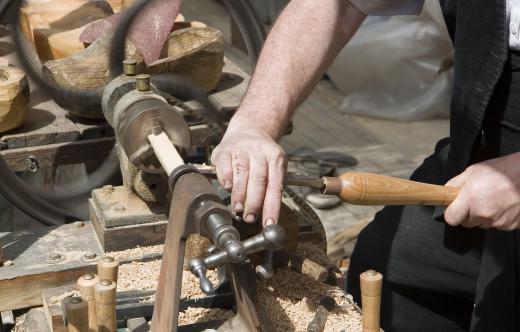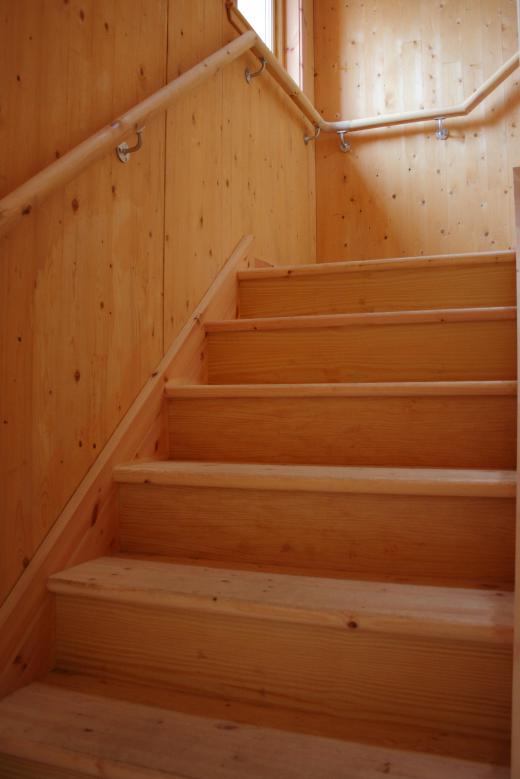A wood turning chisel is a specialized tool used by woodworkers to cut wood that’s being rapidly turned on a lathe. Like all chisels, it has a wood or plastic handle gripping a metal bar, or shank, that’s kept very sharp at its tip; unlike other chisels, though, the handle is about half the overall length of the tool, which is usually at least 12 inches (30.48 cm) long. The shank of a modern wood turning chisel is made either of carbon steel or high-speed steel, and is usually rectangular instead of cylindrical in shape. There are three different tools used in wood turning: chisels, gouges and scrapers. Even in woodworking circles, though, they’re all commonly referred to as wood turning chisels.
Standard woodworking chisels traditionally are used to carve or slice bits of wood from a stationary workpiece. Sometimes the force is applied by the woodworker’s muscle, carefully placing the chisel’s sharp forward edge on the wood’s surface and pushing it into the wood, cutting the fiber. In other cases, a mallet provides the force. Chisels are sometimes used to carve decorative patterns into wood, and at other times to trim excess wood from a workpiece, such as a tenon or a mortise, to help fine-tune a joint. In most traditional forms of woodworking, though, chisels are not the main tool employed, just one of many.

Once a workpiece is mounted on a lathe, on the other hand, all the cutting and shaping is accomplished through the use of wood turning chisels. The techniques employed, though, are much different from those used with standard wood chisels. Instead of clamping the workpiece down to keep it stationary, it’s mounted on a lathe which spins it at a high speed. The wood turning chisel is braced against a tool rest and pressed against the spinning workpiece. More force is used stabilizing the wood turning chisel when it comes in contact with the spinning workpiece, though, than in actually pressing its cutting edge into the workpiece.

The use of the lathe to spin the workpiece on an axis creates a cylindrical object. In addition to the full-sized lathes used for turning such things as chair and table legs, balusters and bowls, mini lathes are made for the production of items such as wooden pen cases. Wood turners sometimes can express their creativity by working freestyle, especially when creating bowls or lamp bases. In most cases, though, they generally must use templates when turning wood, frequently measuring the depth of their cuts with calipers and other precise instruments. This is important when doing production work such as balusters for a staircase.
There are literally hundreds of different types of wood turning chisels. The main differences among them are the type of steel they’re made of and the size and shape of their cutting edges. With the introduction of high-speed steel in the late 20th century, wood turners had the advantage of much stronger tools that permitted higher speeds on the lathe, allowing finer and faster work. The many different shapes and sizes of the cutting edges of wood turning chisels allow turners a wider range of flexibility and creativity.
